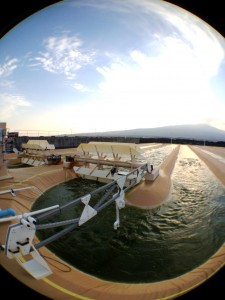
Using crops to produce biofuels always raises questions about how much land will be required, and if there will be a significant displacement of land used for food crops. A new study from the Pacific Northwest National Laboratory (PNNL) finds that the United States has ample land to grow algae for biofuels—and interference with food crops may not be required.
Ian Brenam has the story at Scientific American, and leads with PNNL’s finding that 14 percent of U.S. land could support algae cultivation. Given algae’s high yields that’s more than enough to replace a significant portion of the petroleum fuels we use each year.
One relevant excerpt cites Dr. Stephen Mayfield, the director of the University of California, San Diego’s Algae Center for Biotechnology on why much of the land used for algae cultivation likely won’t interfere with traditional agriculture:
“Mayfield said there is tons of agricultural land sitting idle because it has been “salted out” of production. These unproductive lands would be more valuable holding algae facilities, and Mayfield cites California’s Imperial Valley as a good site for algae ponds since its only current use is storing agricultural runoff, and algae can grow in both ocean and wastewater.”
California may not have the cheapest real estate, but PNNL identified plenty of regions with the right climate, geography and economy that would give algae cultivators an advantage.
As for the challenge of building the infrastructure necessary to support large scale algae farming, Brenam includes this quote from Dr. Mayfield that should diminish any misgivings:
“There was no petroleum industry in 1900,” said Mayfield, “we needed energy, so we built it.”
